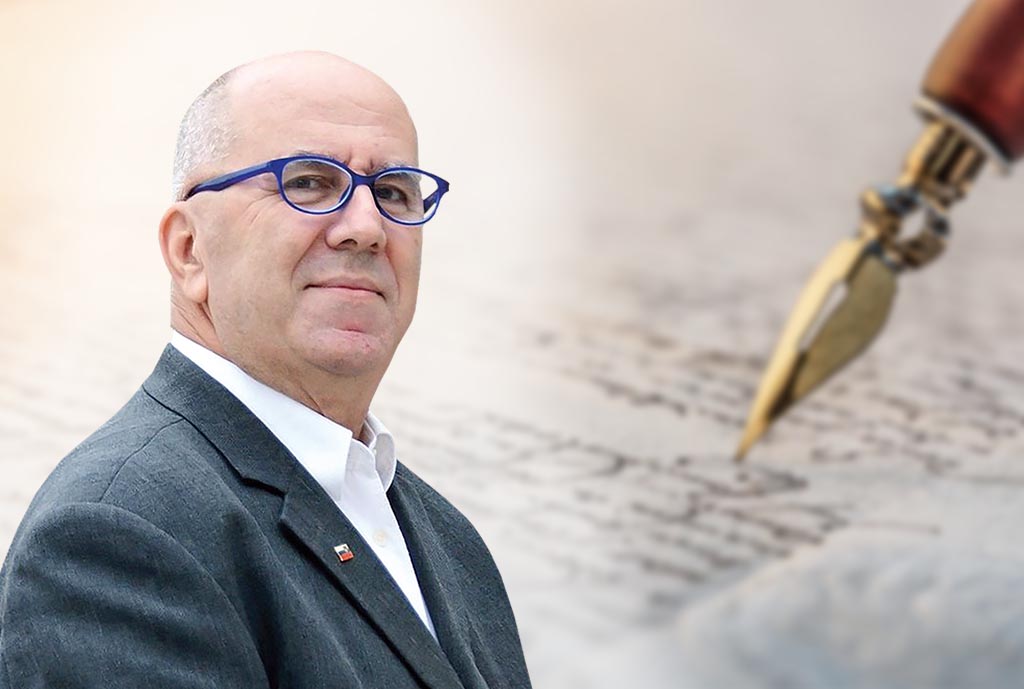By: Vančo K. Tegov
Since 2007, we have been witnessing a dualism of indecency and deception of one’s own citizens. This became evident in the fact that the “planners” of preserving privileges would not always have a smooth ride – as seen during the full term of the first Janša government, which was, in fact, the only one until then and since then to complete its mandate in full.
The old, pre-independence manipulators of politics, having refined their studies in the engineering of human “souls,” seem to have had a revelation – it was time to “move on.” Without scratches or loss of privilege. And how does one most easily and effortlessly achieve this dualism? Through polarisation, fragmentation, and the splintering of the electorate.
What kind of picture do we see on the ground, and later on the political stage?
It is indisputable that ever since this conglomerate of human-soul engineers recognised this “danger,” the SDS party led by Janez Janša has been the strongest presence on the ground. A few people are found locally, and after consultation with the “red” patriarch, someone is invited to run. Then they observe each other, get to know one another, sniff each other out like dogs. Only when they are rallied and make it into parliament do they realise they do not even know who is who – sometimes not even each other’s names. They do not know how anyone thinks, often not who knows what, who will speak, who needs to have their fingers – or even arms – twisted just to mutter a word in the chamber.
It has happened (and continues to happen) that six months after entering parliament, we end up with a “battalion” of mutes, lacking performance skills, unknown potential, mentally and intellectually impoverished – political “half-products” made of highly questionable ingredients, whose psychological and structural durability is unclear. Some collapse after first use or go mad from the sudden “rush” of newfound power or importance – as we have been “lucky” to witness in the media or during televised sessions from the “temple” (often also a hall of shame) of democracy.
Opposite these newcomers, street talkers or sidewalk politicians, stand those with party structure. They have gone through communication training, political maturation, and are supported by teams supplying data, expert analysis, and daily presence on social media.
After 35 years, we are left with a negative mental legacy – indoctrination, in fact – where multiparty democracy is viewed as a relic of bourgeois society, something bad. Many people cannot grasp that without strong, well-developed parties – growing organically from the local level, through municipal councils and mayors, to parliament with MPs, ministers, the government, and state councils – there is no chance of quality governance. It does not work ad hoc. Those who want to lead a country must know something. In this domain of political advantage and references, the greatest value lies with the largest party – also the most organised one – which evokes fear, unease, or respect. A similar level of structure is seen in SD, a party with clearly defined leftist and social traits, and to some extent also in NSi. The rest are political novices, lacking both knowledge and the much-needed mileage.
And what happens when they get in? In the absence of intelligence – which they do not possess – manipulation becomes their only weapon, regardless of the cost. These “schoolchildren,” once seated in parliament, initially or for a long-time fire blank: hitting nothing while the time ticks away on promises. The learning period stretches, and societal health declines.
Is there a cure?
Of course. Common sense. And a doctor, with a properly prescribed therapy. A doctor from the official political “medicine,” offering treatments and procedures recognised in the canon of legitimate approaches – those that lead to healing and eventually to the patient’s (society’s) restored vitality. Alternative “remedies” in the form of street groups, cyclists, purifiers and air stirrers who wish to install power – or “installers” who do not even know what they want, only what they do not – are not an option. Society is not an open day lab where every madman with time and foreign money experiments with “chemicals” that produce only harmful, costly, misguided, and dangerous reactions.
After such a therapeutic intervention in the “health” of society, things may begin to improve – provided that the good from before is not ruined. Then, maybe… things will be better.
